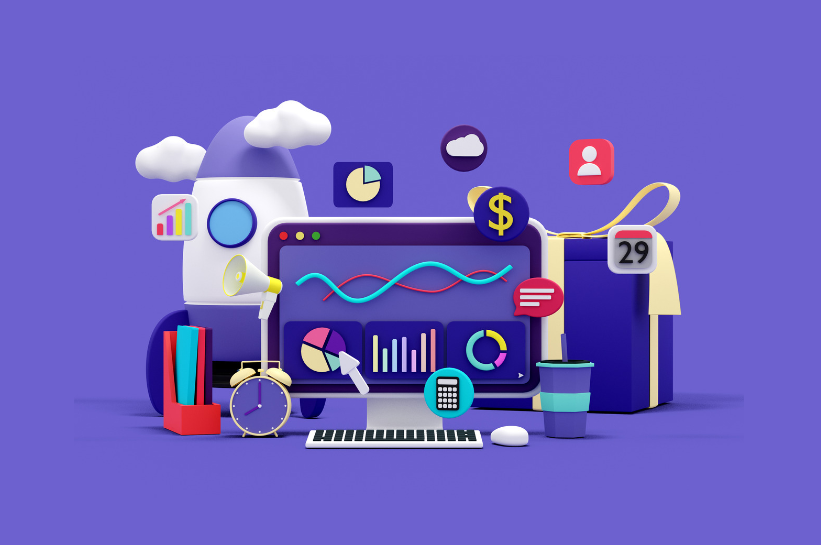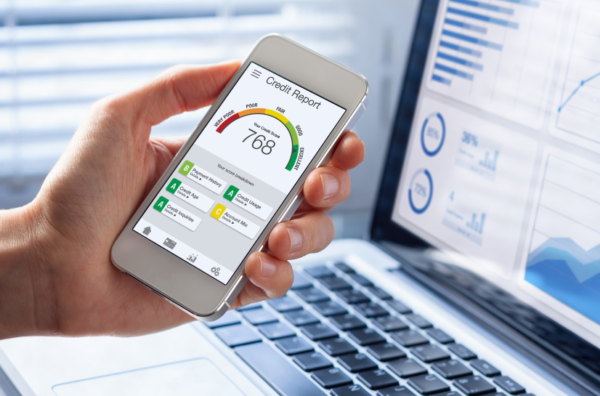How to improve application performance using synthetic monitoring In today’s digital world.
When apps are critical to corporate success, it is critical to maintain maximum performance and availability.
Synthetic monitoring is emerging as a strong tool for proactive application performance monitoring,
offering significant insights into possible bottlenecks and issues before they affect end users.
This article will look at the notion of synthetic monitoring, its benefits, best practices for implementation,
and how to improve application performance using synthetic monitoring.
Read More : How to Fix ChatGPT Login Problems & Errors
Synthetic monitoring is necessary in today’s world.
As organizations increasingly rely on digital assets like websites and apps to interact with consumers, maintaining their functionality is crucial.
Slow website load times, mistakes, and outages can result in revenue loss, lower consumer satisfaction, and brand reputation harm. This is where synthetic monitoring comes in.
Synthetic monitoring is a must-have tool for DevOps engineers in charge of application performance management.
DevOps teams may enhance application performance, decrease downtime, and provide a better end-user experience by proactively detecting and fixing performance issues.
So, let’s dive in and explore how to improve application performance using synthetic monitoring.
What is synthetic monitoring?
Synthetic monitoring, also known as proactive monitoring or active monitoring, is a technique that simulates user interactions with an application by generating artificial transactions.
It allows organizations to gain a comprehensive understanding of their application’s performance from the end-user perspective.
Synthetic monitoring involves setting up scripted transactions that mimic real user interactions and measuring the application’s response time, availability, and functionality.
It is used to maintain optimal performance and user experience, and it may assist enterprises in identifying,
and addressing infrastructure issues before they have an impact on their bottom line.
Understanding synthetic monitoring will help you explore how to improve application performance using synthetic monitoring.
Types of Synthetic Monitoring

There are various forms of synthetic monitoring, each aimed at a certain service area.
Get a closer look at the type you want and how to improve application performance using synthetic monitoring.
Let’s look at some of the most prevalent sorts of synthetic monitoring:
1. Browser-based monitoring:
This type of synthetic monitoring uses a web browser to imitate user interactions with a website or online application.
It guarantees that the frameworks built into your website or application are interoperable and perform flawlessly, regardless of the browser or operating system your clients use.
Multiple workstations located across the world are utilized in these tests to replicate user interactions and evaluate key performance metrics like load time, availability, and HTTP codes.
2. API and endpoint monitoring:
API and endpoint monitoring is a type of synthetic monitoring that focuses on assessing the performance and availability of APIs and endpoints that provide services.
APIs and endpoints are essential components of modern apps because they allow them to interface with external systems and access data.
API and endpoint monitoring technologies frequently feature detailed analytics and dashboards that allow organizations to monitor API traffic, identify abnormalities, and analyze performance patterns.
3. Network monitoring:
the third type is network monitoring it is a type of synthetic monitoring that evaluates a service’s performance and availability from a network standpoint.
Network monitoring software often simulates user transactions from several geographic locations and network providers,
allowing enterprises to assess network performance across multiple geographies and service providers.
These solutions also allow enterprises to monitor network bandwidth use, network utilization,
and other essential network parameters in order to identify bottlenecks and handle issues proactively.
4. Mobile monitoring:
Mobile monitoring is a type of synthetic monitoring that focuses on assessing the performance and availability of mobile apps across a wide range of mobile devices and operating systems.
It assists enterprises with identifying mobile app performance issues such as sluggish loading times, crashes, and errors and ensuring that their mobile apps deliver a consistent user experience.
Mobile monitoring tools often include precise analytics and dashboards that allow enterprises to track the operation of mobile apps across many devices, operating systems, and locations.
Read More : How to Set Up Voicemail
Benefits of Synthetic Monitoring

Best benefits of synthetic monitoring and how to improve application performance using synthetic monitoring
- Proactive Issue Detection: Synthetic monitoring enables proactive detection of application performance issues before they impact end-users.
By simulating user interactions, organizations can identify bottlenecks, slow response times, or errors in critical workflows.
- Improved User Experience: By continuously monitoring application performance, synthetic monitoring helps maintain a seamless user experience.
It allows organizations to identify and resolve performance issues, ensuring optimal user satisfaction.
- Performance Baseline Establishment: Synthetic monitoring establishes a performance baseline by continuously measuring key performance metrics.
This baseline serves as a reference point for assessing any deviations or improvements in application performance over time.
- Predictive Analysis: With historical data collected through synthetic monitoring, organizations can perform predictive analysis to anticipate potential performance issues and take proactive measures to mitigate them.
Read More : How to Improve OEE
Key Factors Affecting Application Performance
Several factors can impact application performance, including:
- Network latency and bandwidth
- Server response time
- Database performance
- Application Architecture
- Third-party integrations
- Code efficiency
- Hardware resources
Importance of Monitoring Application Performance
Monitoring application performance is crucial for the following reasons:
- User Satisfaction: A slow or unreliable application can lead to poor user experience and dissatisfaction. Monitoring performance allows organizations to address issues promptly, ensuring a positive user experience.
- Business Impact: Application performance directly impacts business outcomes. A poorly performing application can result in lost revenue, decreased productivity, and damage to the organization’s reputation.
- Scalability and Growth: Monitoring performance helps identify scalability issues and plan for future growth. It provides insights into resource utilization and capacity planning.
How Synthetic Monitoring Works
- Script Creation: Synthetic monitoring starts with the creation of scripts that define user interactions with the application.
These scripts simulate actions like logging in, browsing specific pages, and completing transactions.
- Monitoring Execution: The synthetic monitoring tool executes the scripts at regular intervals from multiple geographic locations.
It measures the response time, availability, and functionality of the application.
- Data Analysis: The monitoring tool collects data from script executions and analyzes it to generate performance reports, including metrics like response time, error rate, and availability.
Read More : How to Improve Throttle Response
Features of Synthetic Monitoring Tools
Synthetic monitoring tools offer various features to effectively monitor application performance, including:
- Scripting Capabilities: Tools provide an intuitive interface to create and manage scripts that simulate user interactions.
- Geographical Distribution: Monitoring from multiple locations provides insights into performance variations across different regions.
- Real-Time Alerts: Tools can send alerts when performance thresholds are breached, enabling quick issue resolution.
- Performance Reports: Synthetic monitoring tools generate comprehensive reports with metrics and trends, aiding performance analysis and decision-making.
Best Practices for Implementing Synthetic Monitoring

Best practices to improve application performance using synthetic monitoring
- Define Critical User Journeys: Identify the key user journeys within your application and create scripts to simulate those interactions for monitoring.
- Set realistic performance thresholds: Establish performance thresholds based on user expectations and business requirements.
- Monitor from Multiple Locations: Monitor application performance from diverse geographical locations to capture regional variations and ensure a consistent user experience.
- Continuous Improvement: Regularly review and update scripts to reflect changes in the application’s functionality and user behavior.
Use Cases of Synthetic Monitoring
- E-commerce: Synthetic monitoring helps e-commerce businesses ensure smooth transaction flows, detect issues with payment gateways, and validate inventory management.
- SaaS Applications: For SaaS providers, synthetic monitoring ensures optimal performance and availability of their applications, minimizing disruptions for customers.
- Banking and Finance: Synthetic monitoring helps banks and financial institutions monitor critical transactions, such as fund transfers and account balance inquiries, to maintain a secure and reliable user experience.
Top Benefits of Synthetic Monitoring for Application Performance
Synthetic monitoring offers several benefits for application performance improvement:
- Early Issue Detection: By simulating user interactions, synthetic monitoring allows organizations to detect and address performance issues proactively, minimizing their impact on end-users.
- Performance Optimization: Through continuous monitoring and analysis, synthetic monitoring identifies performance bottlenecks and enables optimization efforts, enhancing the overall application’s performance.
- Improved Incident Response: Synthetic monitoring provides real-time alerts and performance reports, enabling prompt incident response and faster resolution times.
Read More : How To Cure Plantar Fasciitis in One Week
Challenges of Synthetic Monitoring
While synthetic monitoring is highly beneficial, it also comes with a few challenges:
- Limited Real-User Perspective: Synthetic monitoring can simulate user interactions but may not capture the full complexity and nuances of real user behavior.
- Dynamic Web Applications: Applications with dynamic content and frequent changes may require frequent script updates to maintain accurate monitoring.
- Cost and Scalability: Synthetic monitoring can involve costs related to tooling, infrastructure, and maintenance, especially for large-scale applications with high traffic.
Future Trends in Synthetic Monitoring
- AI-Driven Monitoring: Artificial intelligence and machine learning techniques will play a significant role in enhancing synthetic monitoring capabilities, providing more accurate insights and predictive analysis.
- Mobile and IoT Monitoring: As mobile applications and IoT devices continue to grow, synthetic monitoring will adapt to monitor performance across various platforms and devices.
- Integration with APM: Synthetic monitoring will integrate closely with Application Performance Monitoring (APM) solutions to provide a comprehensive view of application performance from both synthetic and real-user perspectives.
Top synthetic monitoring tools
Here are the top three tools to improve application performance using synthetic monitoring:
1. Middleware
Middleware is a framework for monitoring complicated, multi-tiered systems. It monitors the performance of web pages and APIs at multiple network levels, and it is simple to deploy and scale in any environment, including Docker, Kubernetes, and others.
- To detect issues faster, see application performance and uptime data alongside crucial business indicators.
- Use a comprehensive time graph to determine whether a step or endpoint is experiencing performance difficulties.
- For a quicker root cause investigation, get a breakdown of network timing data and response time by location.
2. Datadog
Datadog provides synthetic monitoring, which allows customers to construct code-free tests that imitate user interactions on apps and monitor critical network endpoints across many system levels.
- Stay ahead of problems by running API tests on your endpoints on a regular basis.
- Using our fully hosted online recorder, you can easily capture key transactions without writing any code.
- By employing your own private locations, you may ensure secure surveillance of any environment.
3. New Relic
New Relic is a cloud-based observability platform that offers real-time monitoring of software applications, infrastructure, and customer experiences.
- Detects low-performing entities such as URLs, APIs, and services proactively.
- Collaborate to resolve issues automatically generated from affected tests.
- Leverage alerts and AI to seamlessly transition from synthetic checks to automatically generated tickets within AIOps.
Implementing synthetic monitoring using middleware to improve application performance
Using middleware to implement synthetic monitoring to enhance application performance
The middleware platform assists in identifying, understanding, and resolving issues across your cloud infrastructure.
Step 1: Defining monitoring goals and metrics
It is critical for effective synthetic monitoring to define the appropriate monitoring goals and metrics. Defining monitoring objectives entails specifying the exact aims that synthetic monitoring should fulfill.
This might entail identifying possible performance bottlenecks, determining the core causes of performance difficulties, or optimizing the speed of a website or application.
Defining specific monitoring goals allows your DevOps team to stay focused on what they want to accomplish and how they will assess success.
Metrics such as page load time, time to first byte, and server response time, for example, might be significant if the monitoring aim is to enhance website performance.
Similarly, if the purpose of the monitoring is to uncover possible security vulnerabilities, measurements such as error rate, network traffic, and data transfers may be more relevant.
Step 2: Create a new monitor (test).
Synthetic monitoring enables you to conduct single or chained requests to perform network-level verifications on your critical systems: HTTP test, SSL test, DNS test, WebSocket test, TCP test, UDP test, ICMP test, and gRPC test.
Step 3: Define the request.
Give the request a name and an environment, then specify the URL where the test should run. Using an advanced setup option, you may add request headers, authentication, and query parameters.
Step 4: Define assertions and select the location.
Add as many assertions as your request requires. Assertions can aid with more particular testing (for example, the status code should only be 200).
You can direct me to where this test is conducted. When you have global users and your API is accessed globally, location selection is useful.
Step 5: Configure the alert monitoring for the test.
You have the option of notifying who and what about your exam.
View a list of all monitors, including information such as uptime, interval, and status, as well as the opportunity to pause, start, change, or remove the test. You may also narrow down the results by request type or area.
Select a test from the list to get all of the data, such as response time by location, network timing, and test run results.
For each test result, you can see the reaction time history.
Read More : How to Set Up a ChessBoard
Conclusion
In conclusion, our guide on how to improve application performance using synthetic monitoring is a valuable approach to improving application performance by proactively monitoring and optimizing user interactions.
By simulating user behavior, organizations can identify and address performance issues before they impact end-users, ensuring a seamless user experience.
Implementing synthetic monitoring best practices, monitoring critical user journeys, and leveraging the features of synthetic monitoring tools can significantly enhance application performance and drive business success.
FAQs:
Synthetic monitoring can be used for various types of applications, including web, mobile, and API-based applications. It provides valuable insights into performance, regardless of the application type.
The frequency of synthetic monitoring tests depends on factors like the criticality of your application, user traffic patterns, and business requirements. Regular monitoring at intervals ranging from minutes to hours is common practice.
Synthetic monitoring and real-user monitoring serve different purposes. While synthetic monitoring simulates user interactions, RUM captures performance data from actual users. Both approaches are valuable and complement each other in gaining a comprehensive view of application performance.
Synthetic monitoring typically focuses on the application’s performance and does not involve accessing or storing sensitive user data. However, it is important to ensure compliance with data protection regulations and use appropriate anonymization techniques when necessary.
Synthetic monitoring helps organizations proactively detect and address performance issues, leading to improved user satisfaction, reduced revenue loss, and enhanced business outcomes. Presenting these benefits along with a cost-benefit analysis can help justify the investment in synthetic monitoring.

